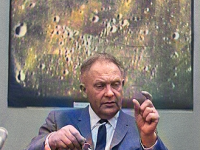Ejnar Hertzsprung and the Hertzsprung-Russell Diagram
On October 8, 1873, Danish chemist and astronomer Ejnar Hertzsprung was born. Together with Henry Norris Russell, Hertzsprung developed the Hertzsprung–Russell diagram, a scatter graph of stars showing the relationship between the stars‘ absolute magnitudes or luminosities versus their spectral classifications or effective temperatures, which has become fundamental to the study of stellar evolution. Ejnar Hertzsprung – Early Years Ejnar Hertzsprung was probably not formally educated, but studied in technological colleges in Denmark…
Read more




